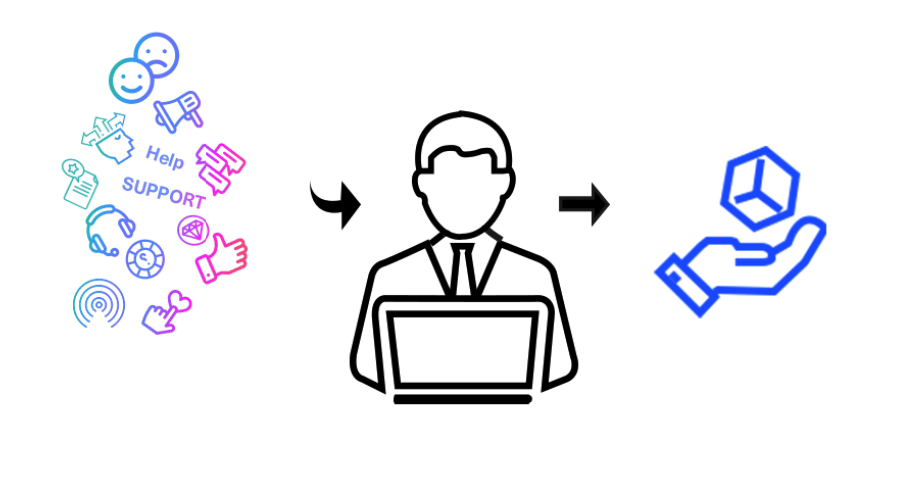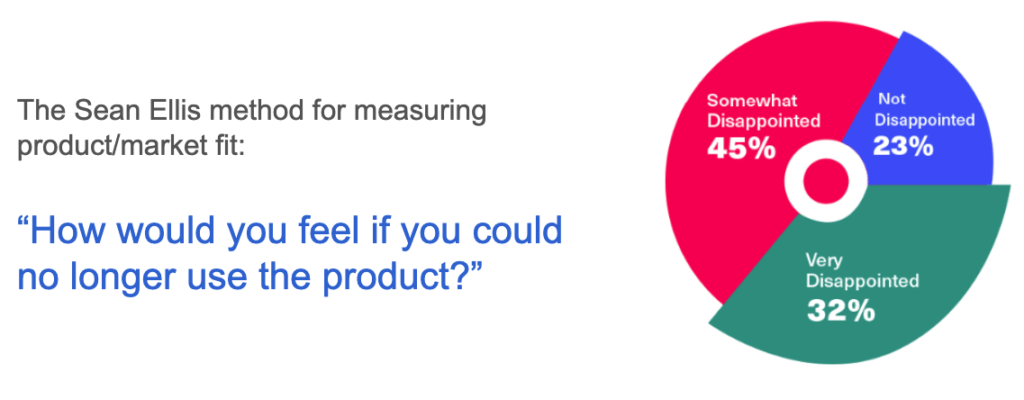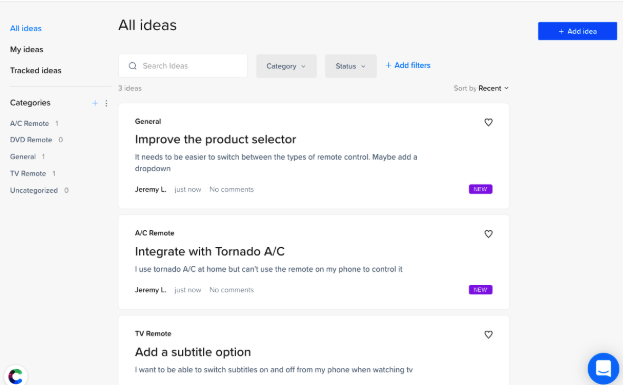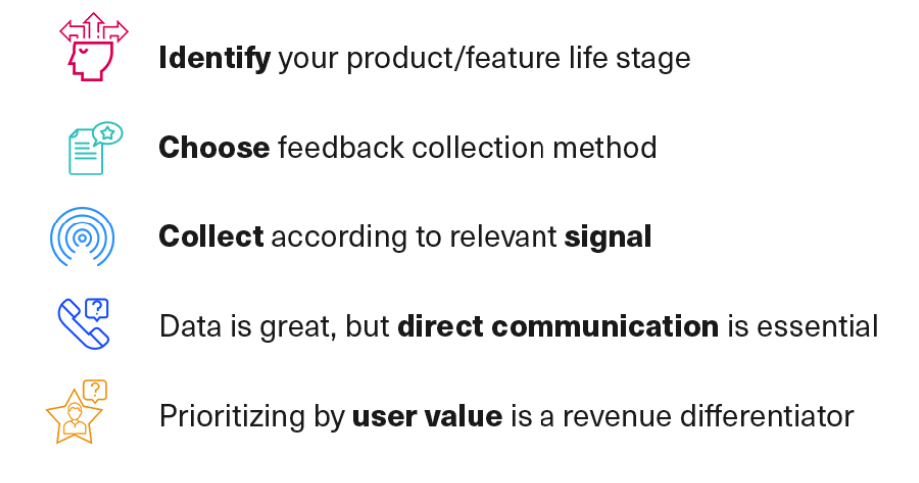Home > Blog > The Art of Listening to Customers: Filtering the Value from the Noise
The Art of Listening to Customers: Filtering the Value from the Noise

This post is based on a September 2019 Craft webinar, hosted by Craft CEO Elad Simon and Riseup CEO Yuval Samet.
It’s clear that feedback can – and should – be a critical part of the product management decision making process.
When planning your product strategy it is essential to find out what real users think and then strike a balance between coming up with your own innovative ideas, reacting to market trends and taking customer opinions into account.
You always want to have the best context about the problem you are trying to solve and the mission you are trying to accomplish with the product you create. The way to know if you are on track is by getting feedback from customers that can be structured in a meaningful context in order to help the team solve a problem.
Product Feedback from customers therefore:
- Serves a product manager’s general hypothesis by highlighting what customers’ appreciate
- Makes an appealing case for the team to be excited about solving the problem, because they have the customers in mind.
There are various feedback models out there, but an innovative approach is to adapt the so-called “Pirate framework” – also known as the AARRR model – to feedback management. This helps you hone in on the type of feedback that is most relevant and appropriate for each stage in the growth of your product – acquisition, activation, retention, referral and revenue.
The Product Feedback Management Process

The methods used as product managers should be thought of as a practical philosophy – you should be able to articulate what you are trying to achieve with the customer in a meaningful way.
First you need to decide what type of feedback is relevant for a certain type of product you are building, then collect the feedback with different methods, then capture signals from the feedback and make product decisions based on it.
It can be frustrating, or at least challenging, when you get into very anecdotal feedback conversations where you focus on 2 or 3 points instead of looking at feedback in a more cohesive and organised way. Having a clear process allows product managers to create evidence for a hypothesis of value they would like to create for the customer.
Common Types of Feedback

When planning feedback collection we should always be aware of what type of feedback we want to collect – and this often depends on what type of feature we are trying to examine.
Product managers should aim to be proficient in different types of methods and should build a big tool box you can use in different situations. Of course, there is no one method that rules them all, so you should match the feedback type to the hypothesis you are building.
For instance, it is super common to use customer satisfaction surveys for complex use cases like an online phone call because they are so nuanced. it is therefore better to use a flat metric like customer satisfaction like 1-5 stars to capture all the nuances and see the trends.
Customer interviews are another favourite of product managers as they allow you to understand what value perception customers have from a new feature or certain phases they go through.
Many product managers tend toward quantitative feedback because numbers speak, but eventually you see that qualitative feedback is very powerful in terms of stories and anecdotes. So even if you show very convincing numbers from a quantitative perspective, having a few examples from real qualitative in depth interviews can be very powerful for convincing yourself and stakeholders. The story telling element of product feedback is just as powerful as the stats.
The AARRR Framework

The AARRR framework is a useful method of both managing growth and feedback. The idea of this framework is to go through the different phases of a feature or a product and understand exactly what we are trying to validate with the users for each phase.
The model was built for B2C but can be used for B2B as well. You can think about it as a trust-based model – as you move towards the bottom of the funnel you build more and more trust and value for your customers so they will definitely be willing to recommend and to pay.
Using AARRR for Feedback

The framework is usually used for growth – but it can also be used for feedback, as it can be applied to generations of the product or feature. This is because the maturity stage of the product or feature indicates what type of feedback you want to collect.
For example. in the acquisition stage you want to get early feedback so you may want to give customers a call and find out how they would use it. And as the product matures you would try to apply different methods such as automatic surveys.
So for each cube in the matrix you can have a unique way to collect feedback and a unique perspective you are trying to achieve. Your hypothesis will change over time so the way you collect the feedback and develop the signal is going to be adjusted as well.
AARRR for Retention Product Feedback

Retention is all about activity – we want to make sure our activity levels do not drop towards zero – our goal is to decrease churn or increase activity.
So how do you collect feedback and create a signal that is going to give us an indication of what we need to do to make customers use the product or feature?

Here you can use the method developed by Sean Ellis who was known as the first growth hacker. He came up with the idea of how to segment customers and focus on the segment you need to take feedback from most seriously.
The idea is to send a survey to a bunch of customers and ask them how they would you feel if you could no longer use the product. You then focus on the people who would be very disappointed if you shut down the product – you listen to the most excited customers and essentially ignore the others.
The Craft Idea Portal

The Craft Idea Portal gives product managers and companies the ability to reach out directly to get feedback from internal colleagues or customers.
So if you are focusing on retention you would go for existing customers. It will help you think about what you want to include in a feature and you can also use it to segment your feedback. For example you can get feedback from only the people who will be very disappointed if you shut down the product so you can clear noise from signals.
It also allows you to have a product feedback loop so you can develop the idea and connect it directly to a feature and then the ideas become useful meta data for a feature you are working on or even a totally new feature. This has the added advantage of making the customers more and more engaged with the product.
In Summary…
When focusing on feedback management you should first identify the life stage your product or feature is at and you can use the AARRR framework to look at the different type of feedback you want in order to create the different types of signals.
You then need to choose the feedback collection method before collecting feedback according to the signals – using a portal like craft.io’s idea portal allows you to distill the noise into a signal which can help you make those all-important prioritization decisions.

To find out more about feedback management check out a recording of the Craft Webinar.
Manage your Product Feedback with Craft
Craft’s Product Management Platform has been specifically designed to streamline the product planning process and help product managers make better decisions as a result. Try it out right now with a 14-day free trial or book a personal live demo with one of our product experts.

